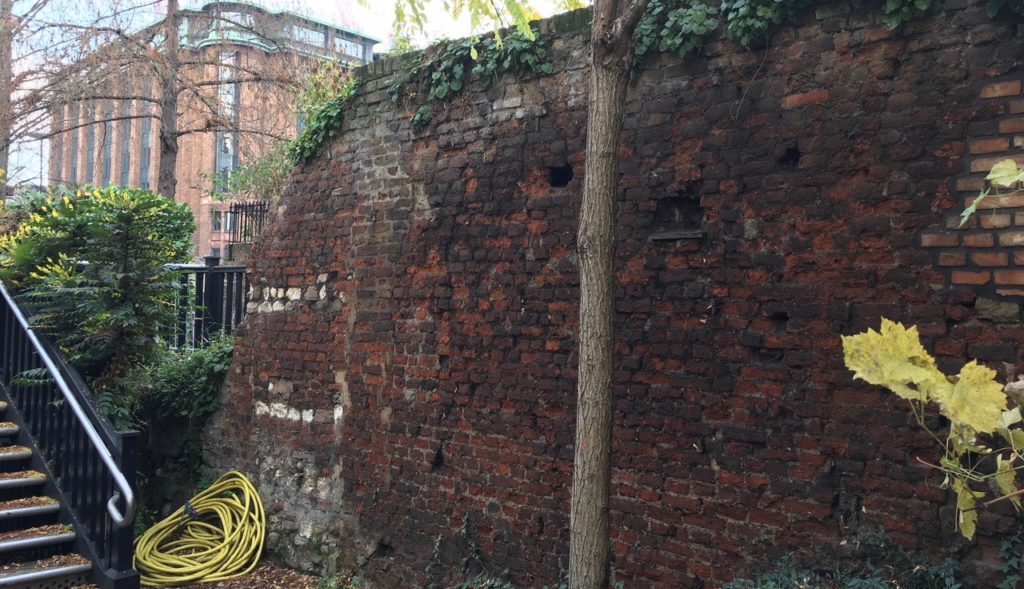If you were asked in a pub quiz where the nearest vineyard to Saint Paul’s is, you might not have the answer. But is actually only a few hundred yards from the cathedral towards the Thames in a lovely oasis of calm called Cleary Garden. The vines are not huge but are impressively productive, a gift from the Loire Valley to remind us that the space used to be a wine trading area too.
But that is not the main point of interest. If you sit on a bench in the vineyard you are at the top edge of what is surely the biggest hidden gem in London – Huggin Hill Roman Baths. They were saved and excavated in the 1960s amid considerable publicity and controversy, but have since faded from public consciousness and almost entirely from public vision.
Most of the extensive remains of the bath house are buried under office blocks at either side of Huggin Hill at the bottom of the slope. They have been preserved, but only after being filled in. Some of the walls were three metres high. There is no public access. Had they been discovered today, maybe the Bloomberg factor would have meant new buildings being constructed to allow it.
On the way down the hill, within Cleary Garden itself, there is a remnant of an old Roman wall – part of the north retaining wall of the bath house – and the only sign above ground of the large Roman remains which lie underneath.
The bath complex was constructed in the latter part of the first century AD and is likely to have extended for 75 metres along the front of the river. Public baths were a huge part of Roman life. This one was so big – one of the most important bath houses in the country – it might have been part of a large building or even a palace.
The Huggin Hill remains have not yet been fully excavated, but they are clearly extensive. They embrace seven rooms at the southern end, including a hot plunge room (or caldarium), a cold room (or frigidarium) and a changing room.
The upper part of the terracing, where Cleary Garden now is, would have contained the tanks and reservoirs that fed the baths with spring water that flowed down the slopes to the Thames. If you want to sit in a tranquil space and contemplate what London used to be, then this is the place to do it.
All previous instalments of Vic Keegan’s Lost London can be found here and Vic’s book of London poems can be bought here.
